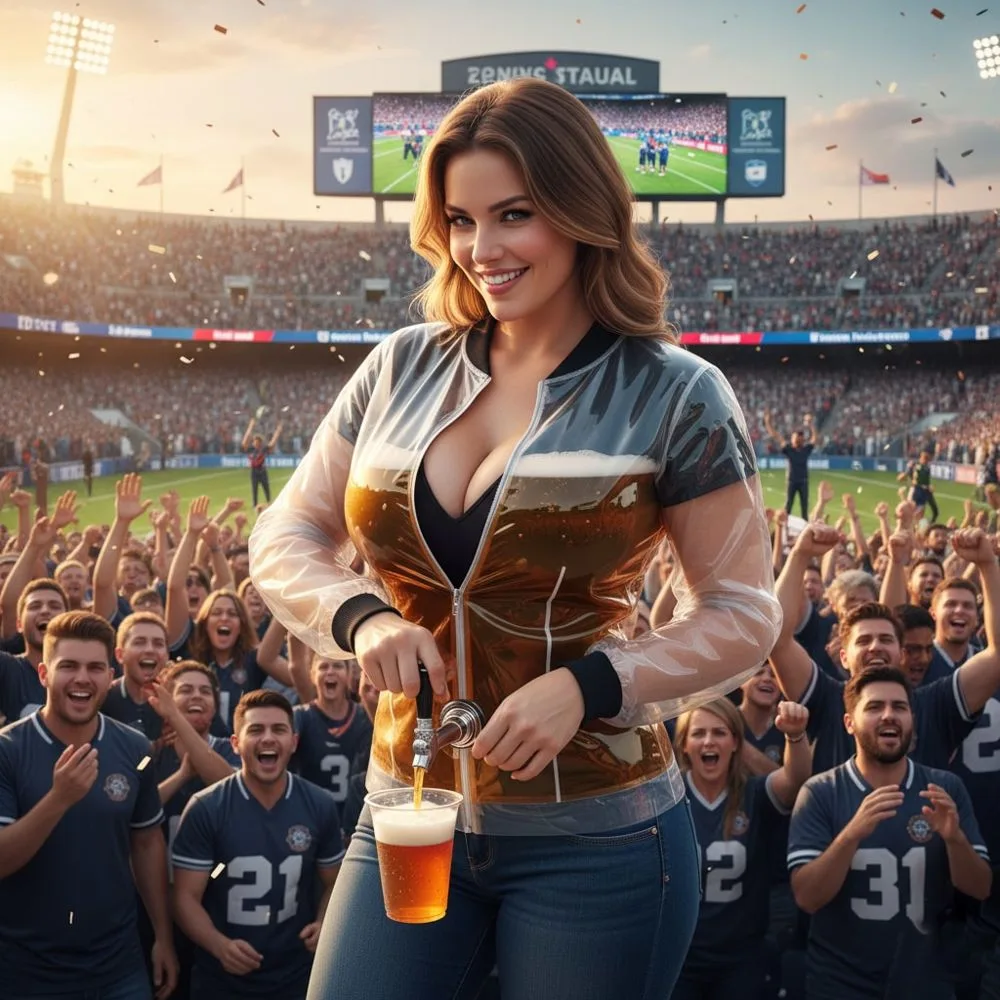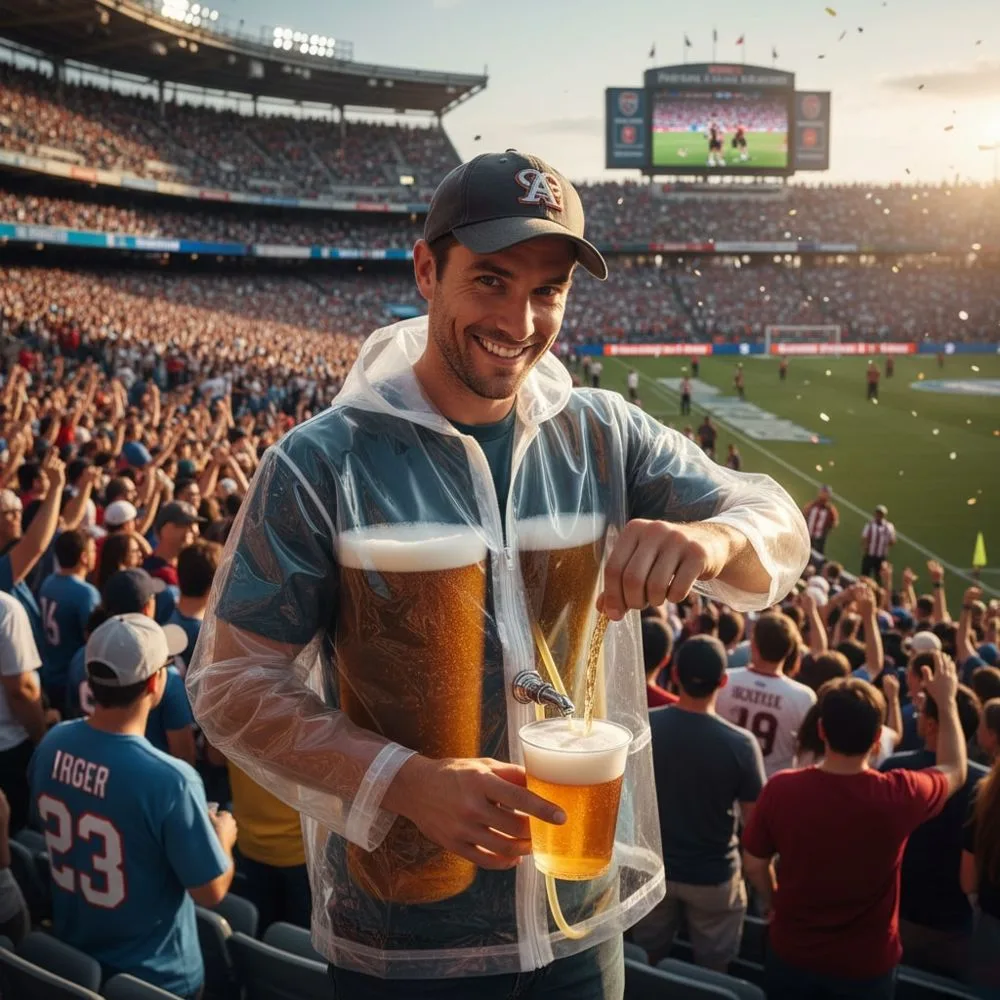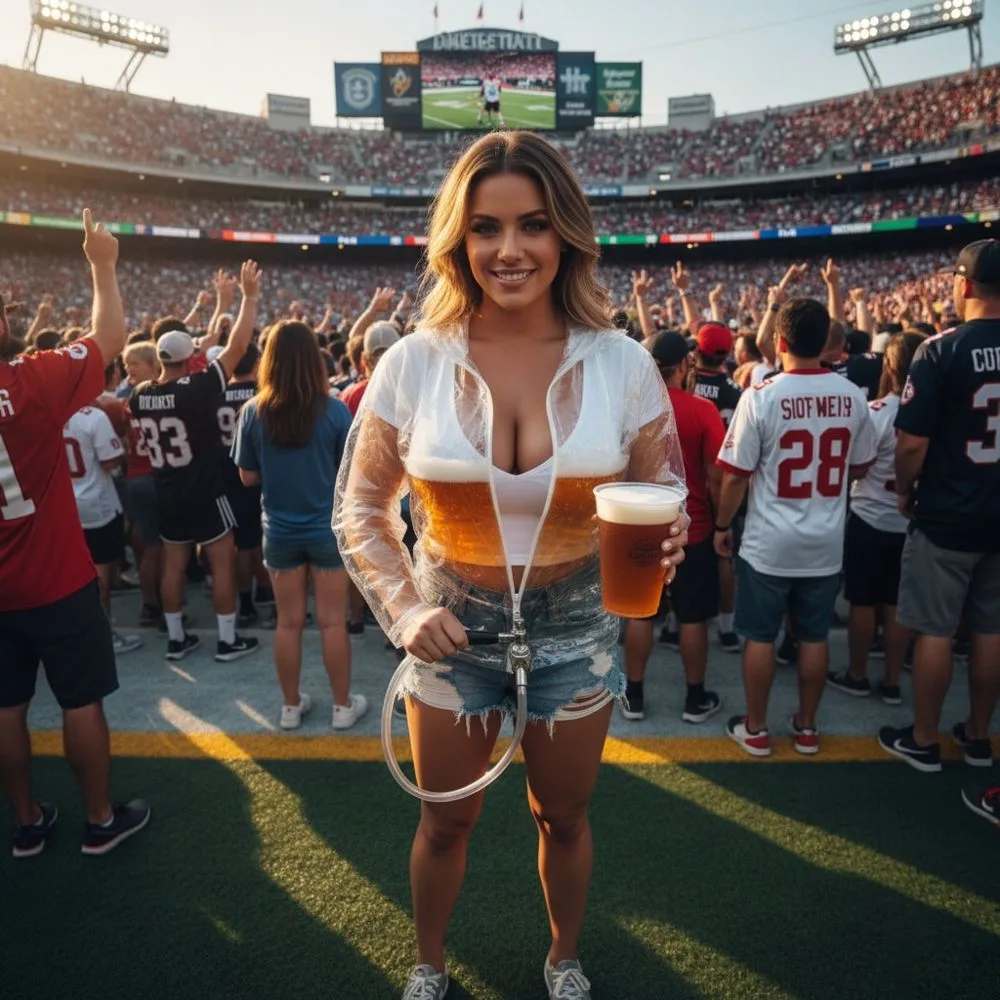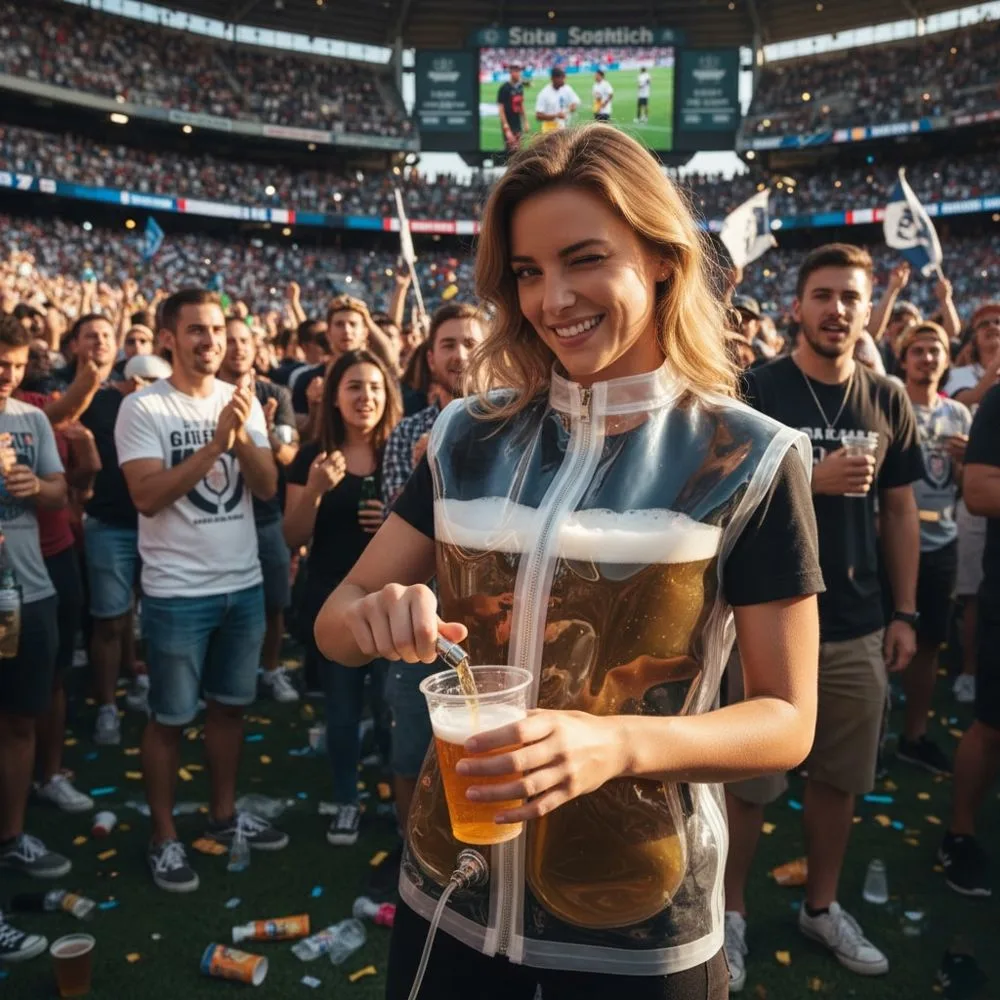Have you ever noticed how a few drinks on a chilly evening suddenly make you feel warm and toasty, even when everyone else is reaching for their coats? This common experience has a name that perfectly captures the sensation: beer jackets. This invisible layer of warmth that seems to wrap around you after consuming alcohol is something millions of people have experienced at outdoor parties, winter festivals, and late night gatherings.
The concept of beer jackets represents more than just a quirky phrase tossed around at parties. It describes a genuine physiological response that occurs when alcohol enters your system and affects how your body regulates temperature. While the sensation feels real and can be quite pleasant in the moment, understanding what actually happens in your body when you experience this warming effect is crucial for staying safe while enjoying social occasions.
The Science Behind Beer Jackets

When you consume alcoholic beverages, your body undergoes several changes that create the illusion of warmth. Alcohol acts as a vasodilator, which means it causes your blood vessels to expand and dilate. This expansion brings more blood flow to the surface of your skin, particularly in your face, neck, and extremities. As warm blood rushes to these areas, you experience a sensation of heat that feels incredibly comforting on a cold day or night.
This physiological response is what gives beer jackets their name and their appeal. The flushed feeling, rosy cheeks, and perceived warmth are all results of increased blood circulation near the skin’s surface. Your body interprets these signals as genuine warmth, and your brain receives the message that you are comfortable despite the cold external temperature.
However, this warming sensation is actually misleading your body’s natural temperature regulation system. While you feel warmer on the outside, your core body temperature is actually dropping. The blood that has moved to your skin’s surface loses heat to the surrounding cold air more rapidly than it would if those blood vessels remained constricted. This creates a dangerous situation where you feel comfortable but are actually at increased risk of hypothermia.
Why Beer Jackets Feel So Real

The experience of wearing a beer jacket feels authentic because the sensory feedback your body provides is genuine. Your skin temperature does increase temporarily, and nerve endings detect this change accurately. The disconnect happens between what your skin feels and what is actually happening to your overall body temperature.
Think of it like opening all the windows in a heated house during winter. The rooms might feel comfortable initially because the heat is escaping freely, but eventually, the entire house will become cold. Your body works similarly when alcohol dilates your blood vessels. The immediate sensation is pleasant, but the long term effect is heat loss that your body struggles to compensate for adequately.
The brain’s reward system also plays a role in why beer jackets feel so satisfying. Alcohol triggers the release of dopamine and other neurotransmitters that create feelings of pleasure and relaxation. This chemical response combines with the physical sensation of warmth to create an overall experience that feels deeply comfortable and enjoyable. Your brain associates the drinking experience with positive feelings, reinforcing the behavior even though it may not be in your best interest from a safety perspective.
Cultural Significance of Beer Jackets

The term beer jackets has become embedded in drinking culture across many countries, particularly in regions with cold climates where outdoor drinking is common. From tailgating parties in freezing parking lots to Christmas markets in European cities, the phenomenon is recognized and often joked about by people who regularly socialize in cold weather conditions.
In college towns and cities with vibrant nightlife scenes, you can often spot people wearing beer jackets on winter nights. They are the ones standing outside bars in light clothing, seemingly impervious to temperatures that have everyone else bundled up. This behavior has become so normalized in some social circles that it is almost expected, with people taking pride in their ability to withstand cold weather after a few drinks.
Music festivals, outdoor sporting events, and holiday celebrations frequently feature attendees relying on beer jackets rather than actual warm clothing. The phenomenon has inspired countless social media posts, memes, and humorous observations about human behavior in cold weather drinking situations. Despite the risks involved, the cultural acceptance of beer jackets remains strong in many communities.
The Risks Nobody Talks About
While beer jackets might feel amazing in the moment, they come with significant safety concerns that deserve serious attention. The primary danger is hypothermia, which occurs when your core body temperature drops below the level necessary for normal metabolism and bodily functions. Because alcohol masks the warning signs your body normally sends when it is too cold, you may not realize you are in danger until serious problems develop.
Frostbite is another risk that increases when you rely on beer jackets for warmth. Your extremities, including fingers, toes, nose, and ears, are particularly vulnerable when blood flow to these areas increases but heat loss accelerates. People under the influence may not notice the numbness and tingling that typically warn of frostbite until damage has already occurred.
Impaired judgment is perhaps the most dangerous aspect of combining alcohol with cold weather. The same drinks that make you feel warm also reduce your ability to make sound decisions about your safety. You might choose to walk home in inadequate clothing, stay outside longer than you should, or engage in risky behaviors you would normally avoid. This combination of reduced physical awareness and impaired decision making creates a perfect storm for cold weather injuries.
Alcohol also interferes with your body’s shivering response, which is its primary mechanism for generating heat when cold. Without effective shivering, your body cannot maintain its core temperature as efficiently, accelerating the rate of heat loss. Additionally, alcohol impairs your coordination and balance, increasing the risk of falls and injuries that become more dangerous in cold weather conditions.
How to Enjoy Winter Drinking Safely

Despite the risks associated with beer jackets, you can absolutely enjoy social drinking in cold weather with proper precautions. The key is planning ahead and staying aware of both your alcohol consumption and the environmental conditions. Here are practical strategies for staying safe while having fun.
Always dress appropriately for the weather before you start drinking. Put on layers, including a proper winter coat, hat, gloves, and warm footwear. Do not rely on alcohol to keep you warm; treat it as a pleasant addition to adequate clothing rather than a replacement for proper gear. Remember that you can always remove layers if you genuinely feel too warm, but you cannot create layers if you are unprepared.
Pace your drinking and alternate alcoholic beverages with water or non alcoholic drinks. This approach helps you stay hydrated, which is important for temperature regulation, and reduces the intensity of the beer jacket effect. Slower consumption also helps maintain better judgment about when it is time to head indoors or get help if someone in your group is showing signs of cold weather problems.
Set time limits for outdoor drinking sessions and stick to them. Decide in advance how long you will stay outside, and have a warm indoor space to retreat to when that time is up. Use smartphone alarms or timers if necessary to remind yourself to check in on how you are actually feeling rather than relying on the false comfort of beer jackets.
Recognizing the Warning Signs

Knowing how to identify the early signs of hypothermia and cold weather injuries can save lives. Look for shivering that suddenly stops, which often indicates that hypothermia is progressing to a dangerous stage. Slurred speech, confusion, drowsiness, and clumsiness beyond what you would expect from alcohol alone are red flags that require immediate attention.
Watch your friends and encourage them to watch you as well. The buddy system works effectively for cold weather drinking because someone who is experiencing hypothermia often cannot recognize their own condition. If you notice someone exhibiting warning signs, get them to a warm environment immediately and seek medical help if symptoms are severe or do not improve quickly with warming.
Beer Jackets and Health Conditions
Certain health conditions make relying on beer jackets even more dangerous than it already is. People with cardiovascular problems, diabetes, thyroid disorders, or peripheral artery disease face heightened risks when drinking in cold weather. These conditions affect how the body regulates temperature and responds to the stress of cold exposure combined with alcohol consumption.

Medications can also interact with alcohol and cold weather in unexpected ways. Blood pressure medications, antidepressants, and various other prescription drugs may amplify the effects of alcohol or interfere with temperature regulation. If you take regular medications, consult with your healthcare provider about potential interactions before engaging in cold weather drinking activities.
Older adults and very young people are also at increased risk for cold weather injuries. Age affects how efficiently the body regulates temperature, and adding alcohol to the equation compounds these challenges. Pregnant women should avoid alcohol entirely, as drinking poses risks to fetal development regardless of weather conditions.
The Psychology of Risk Taking
Understanding why people continue to rely on beer jackets despite known risks involves examining the psychology of risk taking behavior. The immediate gratification of feeling warm and comfortable outweighs the abstract future risk of hypothermia in many people’s minds. This tendency toward present bias is amplified by alcohol’s effects on judgment and impulse control.
Social pressure and cultural norms also play significant roles. When everyone around you is outside in light clothing, drinking and seemingly having a great time, it becomes difficult to be the person who insists on bundling up or heading indoors early. The desire to fit in and not appear overly cautious can override safety concerns, especially in environments where toughness and endurance are valued.
Alternative Ways to Stay Warm
Rather than relying on beer jackets, consider alternatives that actually keep you warm without compromising your safety. Outdoor heaters, fire pits, and heated tents create genuinely warm environments for socializing in cold weather. Many bars and restaurants now offer these amenities, recognizing that their customers want to enjoy outdoor spaces year round.
Warm non alcoholic beverages like hot chocolate, coffee, or tea can be consumed alongside alcoholic drinks to help maintain body temperature. These drinks actually warm your core rather than just creating a surface sensation of heat. They also provide an opportunity to pace your alcohol consumption more effectively.
Hand warmers, heated insoles, and battery powered heated clothing have become increasingly sophisticated and affordable. These technologies offer real warmth that complements appropriate cold weather gear and allows you to stay comfortable without relying on alcohol’s false promises.
Making Smart Choices About Cold Weather Socializing

The bottom line is that beer jackets represent a fascinating intersection of physiology, psychology, and culture, but they should never be your primary strategy for staying warm. Understanding how alcohol affects your body’s temperature regulation empowers you to make informed decisions about drinking in cold weather situations.
Staying Warm and Safe: The Final Word
Beer jackets will likely remain a part of drinking culture for years to come, but that does not mean we cannot approach them with greater awareness and caution. The pleasant warming sensation they provide is real enough in the moment, but the underlying physiology tells a different story about what is actually happening in your body. By combining proper cold weather preparation with mindful drinking habits, you can enjoy social occasions safely regardless of the temperature outside. Remember that true warmth comes from appropriate clothing and heated environments, not from the temporary and misleading effects of alcohol. Make smart choices, watch out for your friends, and never let the comfort of a beer jacket convince you that you are immune to the dangers of cold weather exposure.

